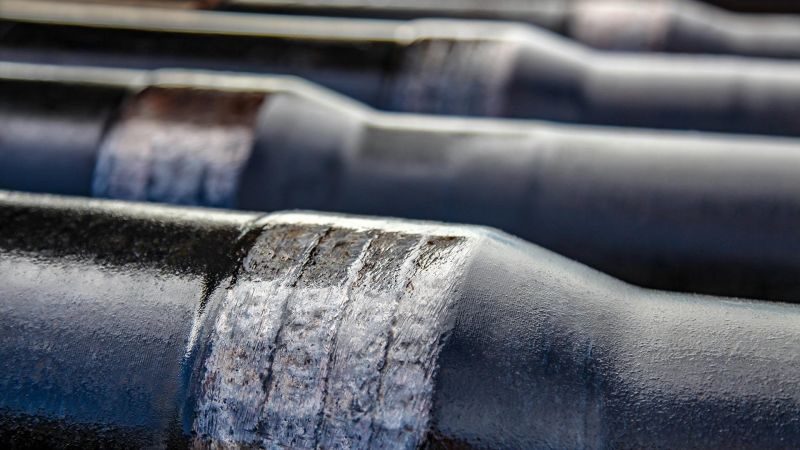Friday Haggler
A reminder of last Friday’s Haggler
Mitigating casing wear is a complex and often misunderstood engineering task (it’s also fairly laborious for whoever does the modelling!). Which are true statements about casing wear:
1. Friction factor has a major influence on casing wear
2. LGS must be kept at or close to 0%
3. Adding lubricants to the mud reduces casing wear
4. Tool joint hard banding material type has minimal effect on casing wear
5. Mud type has a significant effect on casing wear
6. Non-rotating drill pipe protectors are a cost-effective solution for casing wear mitigation
[pic from NOV]
The Answer
Short Answer: Short Answer: 6 and possibly 3.
Long Answer: (1) False: most casing wear occurs while the string is rotating, therefore FF while rotating will have minimal effect on side forces.
(2) False: a low amount of non-abrasive solids creates a bearing type layer around the tool joint and pipe body that reduces casing wear. Abrasive solids (sand) will increase wear rate, therefore sand content should be kept low. (Ref 1)
(3) Possibly: If copolymer beads are used
with a bead recovery unit then they will provide mechanical lubrication by
acting as bearings between the pipe surfaces. Research (Ref 1) shows that
liquids lubricants influence on casing wear reduction varies with the solid
content of the mud.
(4) False: Testing (Ref 2) has showed that tool joint hardbanding has a major effect on casing wear.
(5) False: Some sources (Ref 1) refer to lower wear factors for OBM compared to WBM, however other sources dispute this and claim negligible difference between fluid type. Although it is probably accurate to say that that mud type does not have a “significant” effect.
(6) True: They really do work, whether they are “cost effective” really depends on how much they cost and the financial consequences of not using them. See Ref 4 for a case study illustrating the benefits.
References:
(1) Bol, G. (1986). Effect of Mud Composition on Wear And Friction of Casing and Tool Joints. SPE Drilling Engineering.
(2) Mitchell, S., & Xiang, Y. (2012). Improving Casing Wear Prediction and Mitigations Using a Statistically Based Model. SPE 151448.
(3) White, J., & Dawson, R. (1987). Casing Wear: Laboratory Measurements and Field Predictions. SPE Drilling Engineering.
(4) Dai, Noel et al. (2018). A Practical approach to Casing Wear Prediction, Modeling and Mitigation on Challenging ERD wells. SPE-191495-MS.
(5) Aniket Kumar, R. S. (2015). Casing Wear Factors: How do they Improve Well Integrity Analyses? SPE-173053-MS.
(6) Fontenot, & Bradley. (1975). The prediction and control of casing wear, . J. Pet. Tech. Schoenmakers. (1987). Casing wear during drilling: simulation prediction and control. SPE.




